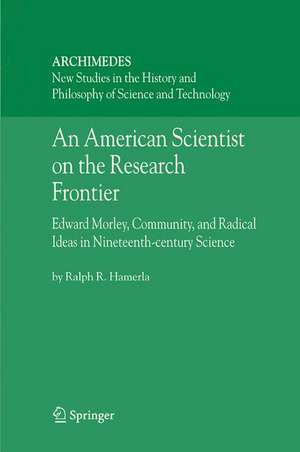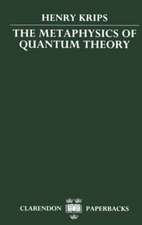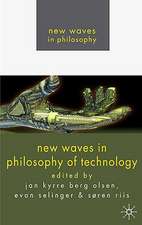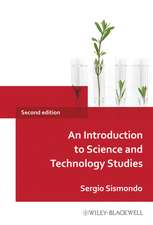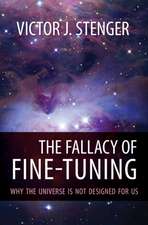An American Scientist on the Research Frontier: Edward Morley, Community, and Radical Ideas in Nineteenth-Century Science: Archimedes, cartea 13
Autor Ralph R. Hamerlaen Limba Engleză Hardback – 27 ian 2006
This important examination of Morley’s struggle for personal and professional legitimacy extends and transforms our understanding of science during a foundational period, and leads to a number of unique conclusions that are vital to the literature and historiography of science. By revealing important aspects of the scientific culture of the American heartland, An American Scientist on the Research Frontier deepens our understanding of an individual scientist and of American science more broadly. In so doing, Hamerla changes the way we approach and understand the creation of scientific knowledge, scientific communities, and the history of science itself.
| Toate formatele și edițiile | Preț | Express |
|---|---|---|
| Paperback (1) | 639.41 lei 6-8 săpt. | |
| SPRINGER NETHERLANDS – 30 noi 2010 | 639.41 lei 6-8 săpt. | |
| Hardback (1) | 645.79 lei 6-8 săpt. | |
| SPRINGER NETHERLANDS – 27 ian 2006 | 645.79 lei 6-8 săpt. |
Din seria Archimedes
- 5%
 Preț: 909.01 lei
Preț: 909.01 lei - 18%
 Preț: 899.21 lei
Preț: 899.21 lei - 18%
 Preț: 785.55 lei
Preț: 785.55 lei -
 Preț: 382.36 lei
Preț: 382.36 lei - 18%
 Preț: 1833.33 lei
Preț: 1833.33 lei - 15%
 Preț: 643.84 lei
Preț: 643.84 lei - 18%
 Preț: 951.77 lei
Preț: 951.77 lei - 15%
 Preț: 644.30 lei
Preț: 644.30 lei - 20%
 Preț: 577.19 lei
Preț: 577.19 lei - 18%
 Preț: 1048.19 lei
Preț: 1048.19 lei - 15%
 Preț: 646.62 lei
Preț: 646.62 lei - 18%
 Preț: 1110.09 lei
Preț: 1110.09 lei - 18%
 Preț: 1211.25 lei
Preț: 1211.25 lei - 18%
 Preț: 730.02 lei
Preț: 730.02 lei - 18%
 Preț: 1546.82 lei
Preț: 1546.82 lei - 18%
 Preț: 891.48 lei
Preț: 891.48 lei - 18%
 Preț: 776.88 lei
Preț: 776.88 lei - 18%
 Preț: 1214.60 lei
Preț: 1214.60 lei - 18%
 Preț: 1113.26 lei
Preț: 1113.26 lei - 18%
 Preț: 777.69 lei
Preț: 777.69 lei - 18%
 Preț: 995.83 lei
Preț: 995.83 lei - 15%
 Preț: 635.47 lei
Preț: 635.47 lei - 24%
 Preț: 1459.28 lei
Preț: 1459.28 lei - 18%
 Preț: 948.47 lei
Preț: 948.47 lei - 18%
 Preț: 1666.97 lei
Preț: 1666.97 lei - 18%
 Preț: 1114.83 lei
Preț: 1114.83 lei - 15%
 Preț: 645.60 lei
Preț: 645.60 lei
Preț: 645.79 lei
Preț vechi: 759.76 lei
-15% Nou
Puncte Express: 969
Preț estimativ în valută:
123.59€ • 134.20$ • 103.81£
123.59€ • 134.20$ • 103.81£
Carte tipărită la comandă
Livrare economică 22 aprilie-06 mai
Preluare comenzi: 021 569.72.76
Specificații
ISBN-13: 9781402040887
ISBN-10: 1402040881
Pagini: 262
Ilustrații: XIV, 262 p.
Dimensiuni: 155 x 235 x 15 mm
Greutate: 0.57 kg
Ediția:2006
Editura: SPRINGER NETHERLANDS
Colecția Springer
Seria Archimedes
Locul publicării:Dordrecht, Netherlands
ISBN-10: 1402040881
Pagini: 262
Ilustrații: XIV, 262 p.
Dimensiuni: 155 x 235 x 15 mm
Greutate: 0.57 kg
Ediția:2006
Editura: SPRINGER NETHERLANDS
Colecția Springer
Seria Archimedes
Locul publicării:Dordrecht, Netherlands
Public țintă
ResearchCuprins
The Morleys.- Edward Morley: Education, Civil War, and the Western Reserve.- Making a Place.- Kindred Spirits: The Ether Drift.- Intellectual Heritage, Prout’s Hypothesis.- Oxygen.
Textul de pe ultima copertă
An American Scientist on the Research Frontier is the first scholarly study of the nineteenth-century American scientist Edward Williams Morley. In part, it is the long-overdue story of a man who lent his name to the Michelson and Morley Ether-Drift Experiment, and who conclusively established the atomic weight of oxygen. It is also the untold story of science in provincial America: what Hamerla presents as science on the "American research frontier." Hamerla carefully and usefully directs our attention away from more familiar sites of scientific activity during the nineteenth century, such as Harvard, Yale and Johns Hopkins. In so doing, he expands and reframes our understanding of how—and where—important scientific inquiry occurred during these years: not only in the Northeastern centers of elite academia, but also in the vastly different cultural contexts of Hudson and Cleveland, Ohio. This important examination of Morley’s struggle for personal and professional legitimacy extends and transforms our understanding of science during a foundational period, and leads to a number of unique conclusions that are vital to the literature and historiography of science. By revealing important aspects of the scientific culture of the American heartland, An American Scientist on the Research Frontier deepens our understanding of an individual scientist and of American science more broadly. In so doing, Hamerla changes the way we
approach and understand the creation of scientific knowledge, scientific communities, and the history of science itself.
approach and understand the creation of scientific knowledge, scientific communities, and the history of science itself.
Caracteristici
Shows the ways scientists and scientific communities developed, communicated, and contributed to knowledge during a transitional period in history Describes American communities beyond those normally associated with the history of science. Explores the relationships between communities and social environments in which the scientist practiced his trade An illustrative and interesting account of what it was like to be a scientist in the American West
